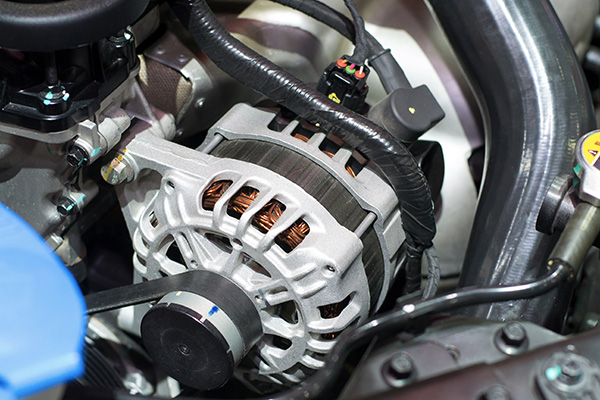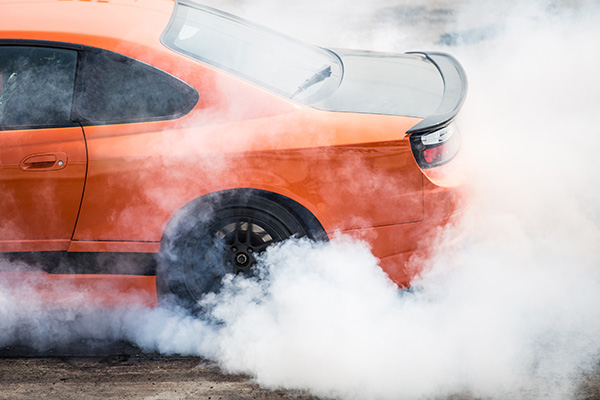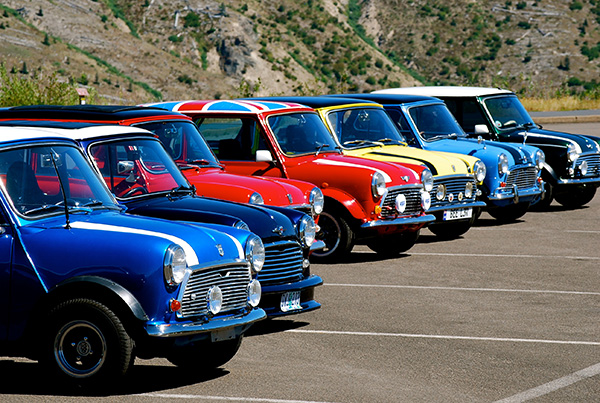Posted on 12/20/2024

When winter mornings roll around, there’s nothing quite like sitting in a toasty car while the world outside freezes. For many, idling the engine before driving is a ritual they swear by. But have you ever stopped to wonder if this habit is good for your car—or even necessary? Modern engines and environmental concerns have changed the game, making it important to understand how idling impacts your vehicle and the best way to get it winter-ready. Does Your Car Need to Idle in the Cold Not as much as you might think. Years ago, cars relied on carburetors, which required extra time to warm up before they could function properly. These days, nearly all vehicles come equipped with fuel-injection systems that adjust the air-fuel mixture automatically, even in freezing temperatures. So, unless your car is an older model, you don’t need to idle it for extended periods. Instead, driving your car gently after starting it is usually the best way to warm up th ... read more
Posted on 11/29/2024

There’s nothing more frustrating than hopping into your car only to find the windows completely fogged up. It’s not just a minor inconvenience—fogged windows can be a real safety hazard by reducing visibility. So why does it happen, and what can you do to prevent it? Let’s dig into the science behind window fogging and explore some effective ways to keep your windows clear. What Causes Car Windows to Fog Up Fogging happens when there’s a difference in temperature and humidity between the inside and outside of your car. When warm, moist air inside the car comes into contact with the cooler surface of the windows, it condenses, forming a layer of fog or moisture. This is especially common in colder weather, when the difference in temperature can be dramatic. But fogging isn’t limited to winter; it can happen in any season under the right (or wrong) conditions. Here are some key factors that contribute to window fogging: Hig ... read more
Posted on 10/31/2024

There are few things more frustrating than turning your key (or pressing the start button) and hearing nothing but a faint click or the sound of silence. If your car won’t start, you’re likely wondering what the issue could be. Could it be a dead battery, a faulty alternator, or maybe the starter itself? Understanding the different roles these components play in your vehicle’s electrical system can help you troubleshoot the problem before heading to the repair shop. 1. Is It the Battery? The battery is often the first suspect when your car doesn’t start, and for good reason. The battery provides the power needed to turn on the ignition and crank the engine. If your battery is dead or dying, you may notice the dashboard lights dim or hear a clicking sound when you attempt to start the car. These are telltale signs that your battery might not have enough charge to power the vehicle. If your car has been sitting unused for a while, or if you&rsq ... read more
Posted on 9/27/2024

As summer fades and the crisp autumn air rolls in, it’s important to ensure your vehicle is prepared for the seasonal changes ahead. As you know, in Canada, fall brings cooler temperatures, wet roads, and unpredictable weather, which can take a toll on your car if it’s not properly maintained. Whether you're dealing with rainy days, slippery leaves, or the early signs of winter frost, your vehicle needs to be in top shape to handle it all. So, what exactly does "fall-ready" car maintenance entail? Let’s break down the essential steps to keep your vehicle running smoothly throughout the season. 1. Check and Replace Your Wiper Blades Fall is known for rain and sometimes even early snowfall, so having functioning wipers is crucial. Wiper blades can become worn and ineffective after the summer, especially after enduring the heat and sun exposure. If you notice streaks on your windshield or hear squeaking noises when you use your wipers, it ... read more
Posted on 8/30/2024

When it comes to luxury cars, BMW has long been synonymous with excellence. For Canadian car enthusiasts, BMW offers a lineup that blends performance, innovation, and elegance. We will share the top five BMW models available in Canada, examining what makes each of these vehicles stand out in terms of efficiency, performance, safety, and overall driving experience. 1. 2024 BMW i5 M60 xDrive The 2024 BMW i5 M60 xDrive is a powerhouse of electric efficiency and performance. With a sleek design and a powerful electric motor, this model is perfect for those looking to combine luxury with cutting-edge technology. Efficiency and Power Source The i5 M60 boasts an impressive efficiency of 2.6 Le/100km, making it one of the most efficient electric vehicles on the market. Powered entirely by electricity, it represents a step forward in sustainable drivi ... read more
Posted on 7/26/2024

BMW's M badge represents the pinnacle of performance and luxury within the brand's lineup. However, with the significant price jump that comes with these models, many potential buyers are left wondering: Is the BMW M badge worth the extra cost? Let's discuss what makes an M model special, the added benefits, and whether it justifies the premium price tag. The Legacy of the M Badge The M in BMW M stands for "Motorsport." Originally developed for BMW's racing division, the M badge has become a symbol of performance excellence. The first M model, the BMW M1, debuted in the late 1970s, setting the stage for a series of vehicles that combine everyday usability with track-ready performance. Today, the M badge signifies a blend of speed, handling, and premium quality, often with bespoke features unavailable in the standard lineup. P ... read more
Posted on 6/28/2024

Have you ever wondered how BMW evolved from an aircraft engine manufacturer to a world-renowned luxury car brand? The transformation is a riveting tale of innovation, resilience, and an unwavering commitment to excellence. Let's journey through BMW's history, from its early days in aviation to its rise as a symbol of luxury and performance on the road. Aviation Origins BMW, short for Bayerische Motoren Werke AG, was founded in 1916. However, its roots extend back to two separate companies: Rapp Motorenwerke, founded by Karl Rapp, and Gustav Otto's Flugmaschinenfabrik. Initially, BMW's primary focus was on producing aircraft engines. During World War I, BMW gained recognition for its high-performance engines, particularly the BMW IIIa, which excelled at high altitudes due to its innovative design. The end of World War I brought significant changes for BMW. The Treaty of Versailles, signed in 1919, prohibited Germany from producing aircraft engines, fo ... read more
Posted on 5/28/2024

Mini Coopers are iconic, stylish, and fun to drive, but like any vehicle, they come with their own set of quirks and challenges. In this article, we share the seven most common issues that Mini Cooper owners encounter, offering insights into how to identify and address these problems to keep your Mini healthy. 1. Timing Chain Tensioner Failure One of the most notorious issues with Mini Coopers is timing chain tensioner failure. This can lead to catastrophic engine damage if not addressed promptly. Signs of this problem include a rattling noise coming from the engine, especially during cold starts. 2. Power Steering Pump Failure Power steering pump failures are another common issue in Mini Coopers, resulting in difficulty steering or a complete loss of power assistance. If you notice increased resistance when turning the wheel or unusual noises from the steering system, inspecting the power steering pump may be time. 3. Coolant Leaks ... read more
Posted on 4/26/2024

Since its debut in 1959, the Mini Cooper has captured the hearts of drivers worldwide with its iconic design, exceptional handling, and spirited performance. From its humble beginnings as a compact city car to its evolution into a modern icon, the Mini Cooper holds a special place in the automotive landscape. A Brief History of the Mini Cooper The Mini Cooper story begins in the late 1950s, when British Motor Corporation (BMC) tasked designer Sir Alec Issigonis with creating a small, fuel-efficient car for the masses. The result was the original Mini, a revolutionary vehicle that defied convention with its transverse engine layout, front-wheel-drive configuration, and compact dimensions. Launched in 1959, the Mini quickly gained popularity for its nimble handling, efficient use of space, and affordable price tag. Racing Heritage and Performance In 1961, racing legend John Cooper recognized the Mini's potential and collaborated with BMC to creat ... read more
Posted on 3/31/2024
.jpeg)
When it comes to the inner workings of your car's engine, few components are as critical yet often misunderstood as the timing chain. While it may not be as well-known as other engine parts, the timing chain plays a crucial role in ensuring the smooth and precise operation of your vehicle. What is a Timing Chain? A timing chain is a metal chain that synchronizes the rotation of the crankshaft and the camshaft(s) in an internal combustion engine. It is responsible for ensuring that the engine's valves open and close at the correct time for the movement of the pistons. Essentially, the timing chain keeps everything in the engine running smoothly and in perfect harmony. The Role of Timing in Engine Performance Timing is everything in an engine. Precisely opening and closing the valves at the right moment are crucial for the combustion process to occur correctly. If the timing is off, it can lead to a host of issues, including reduced engine pe ... read more